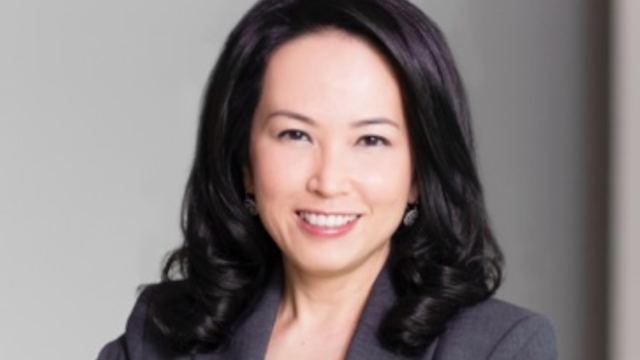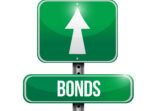Min Lan Tan, UBS Global Wealth Management
“We are moderately optimistic that the worst of the crisis is behind us,” said Min Lan Tan, head chief investment office Apac, UBS Global Wealth Management on an Asia-Pacific media conference call on Tuesday.
However, UBS GWM, the world’s largest wealth manager by AUM, is cautious about global equity indices following their rally from March lows. Instead, it prefers corporate and emerging market dollar bonds due to their elevated yield spreads and the support to some bond market segments by the US Federal Reserve (Fed) purchasing programme.
In contrast, some other wealth managers, such as Lombard Odier, have a taken a more confident short-term approach to global equities, while others such as Citi Private Bank, remain committed to what it sees as “unstoppable structural trends” which will drive Asia equity markets higher over the longer-term.
UBS GWM is increasing its overweight to US investment grade bonds in its portfolios, despite the yield spread narrowing from around 290 basis points (bps) when it first initiated an overweight position on 30 March to slightly below 200bps now.
“Based on our central scenario of a sustainable return to normal economic functioning by December, we believe US investment grade spreads will contract to 150bps and could even end the year at 100bps,” said Tan.
Investment grade bond prices are being bolstered by the Fed, with purchases of high-quality bonds at the core of the central bank’s emergency programme. The recent inclusion of “fallen angels” also reduces concerns that many investment grade issuers could lose Fed backing in the event they are downgraded to high yield, especially given that around half of investment grade issuers have BBB ratings and so are relatively close to high yield territory.
“We believe that policymakers have done enough to ensure that liquidity issues do not become solvency issues for companies that were viable before the crisis. Moreover, we see evidence that corporate behaviour has become much more bondholder-friendly, including cuts to share buyback programs, dividends, and capital expenditures,” said Tan.
In portfolios, UBS GWM also remains overweight US high yield and dollar-denominated emerging market sovereign bonds, which are trading at historically wide spreads.
“In the past, buying high yield and emerging market debt at these levels has generated strong returns for investors,” said Tan.
In Asia credit, Tan recommend investors “stay focused on quality”, although is prepared to move down the credit curve to include BBB rated investment grade bonds market-leading China BB rated property names.

Recovery scenario
UBS GWM’s moderately “risk-on” portfolio positioning is predicated on an broadly optimistic outlook for containment of the Covid-19 virus and a return to normalised activity in some segments of the global economy.
Different parts of the world are at different stages of tackling the virus’s spread and therefore restarting their economies, with the Europe and non-China Asia about one month behind China and the US lagging two months, according to the firm.
“How risk assets perform for the rest of the year will likely depend on three key factors,” said Tan.
First, the length of the current economic shutdown, which will be determined by how quickly the virus spread is contained, the magnitude of any second-round infections, and the successful mitigation of longer-term economic harm.
“In our base case, we see lockdowns being eased by June in the US and by mid-May in Europe and non-China Asia, allowing for an economic recovery in the second half of the year,” she said.
Second, policy support will be critical to revive economic activity once the lockdowns are lifted.
“The good news is that in recent weeks fiscal and monetary support has been unprecedented throughout the world, led by the US Federal Reserve, whose balance sheet is set to double to $9trn by the end of this year,” said Tan.
Third, “all eyes are on data to see just how bad things really get (and whether more stimulus is needed) and to spot tangible turning points as policymakers plan their next steps”.
Tan noted that learning from China’s experience will be vital, as the country returns to normal.
Lessons learned include that it takes four-to-six weeks from when people start going back to work before daily indicators of activity (such as traffic and energy consumption) return to over 80% of pre-Covid-19 levels; more normal work patterns would encourage people to socialize and consume; and industrial segments recover before consumption.
Selective equities
Despite its caution, its tilt towards credit and the recent rally in global stock prices, UBS GWM expects further strength in Asia-Pacific equity markets.
It is overweight China equities, and forecasts double-digit returns in the second half of the year, and also predicts another 7% upside for the MSCI Asia ex-Japan index after rallying 18% since its March lows.
However, Tan said that stock and sector performance is likely to be uneven, and advises investors to focus on three main areas:
First, quality cyclicals in semiconductors, and industry consolidators in Chinese real estate; second, stocks with resilient earnings such as consumer staples, healthcare and communication services companies; and third, companies that benefit from accelerated spending on technologies such as remote working, virtual learning, and “telemedicine”.
Tan also likes “stay-at-home” names, that is companies with significant online exposures such as those in the e-commerce, gaming, online education services and food delivery businesses.
Conversely, she recommends avoiding “vulnerable sectors such as energy, airlines, casinos, hotels, other travel-related segments and select consumer-related industries, given the risk of sharp near-term earnings cuts.
Nevertheless, uncertainty remains a constant, and investors should “cushion their portfolios” against more bad news — including with an allocation to gold.
“Gold is an insurance asset, and low US real interest rates and a weaker US dollar should continue to support the yellow metal which attracted record inflows in the last quarter,” said Tan.
The price of gold has risen by 32% over the past year, and is set to hit $1,800 an ounce in the next six-to-12 months, according to UBS GWM research.

















